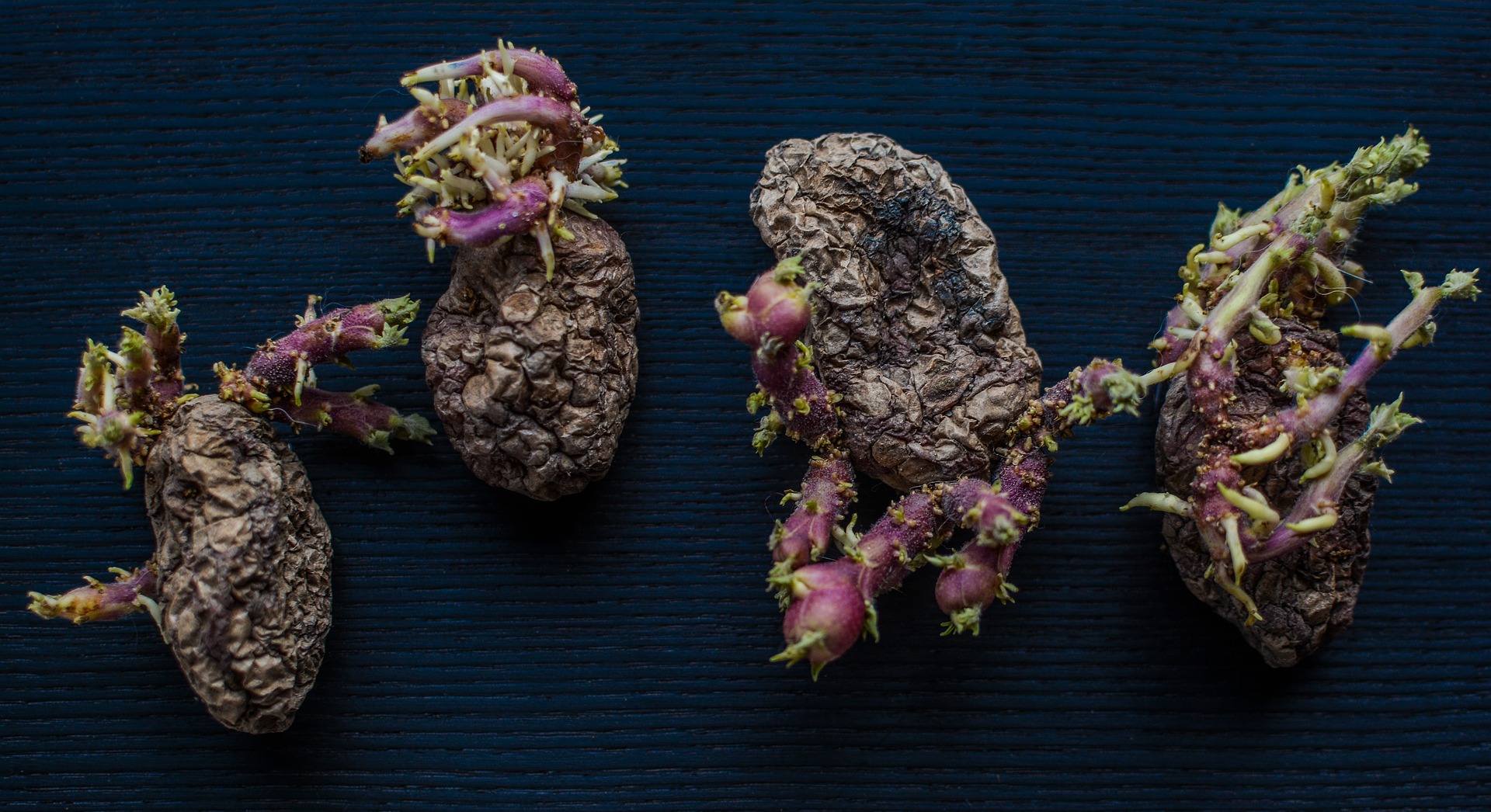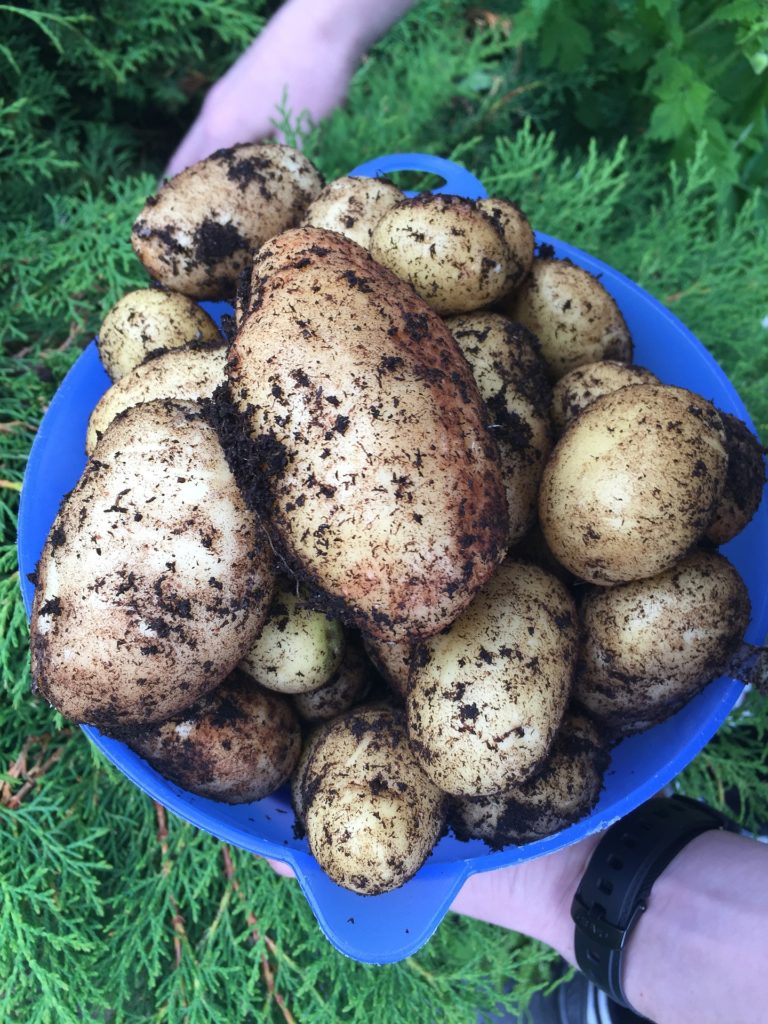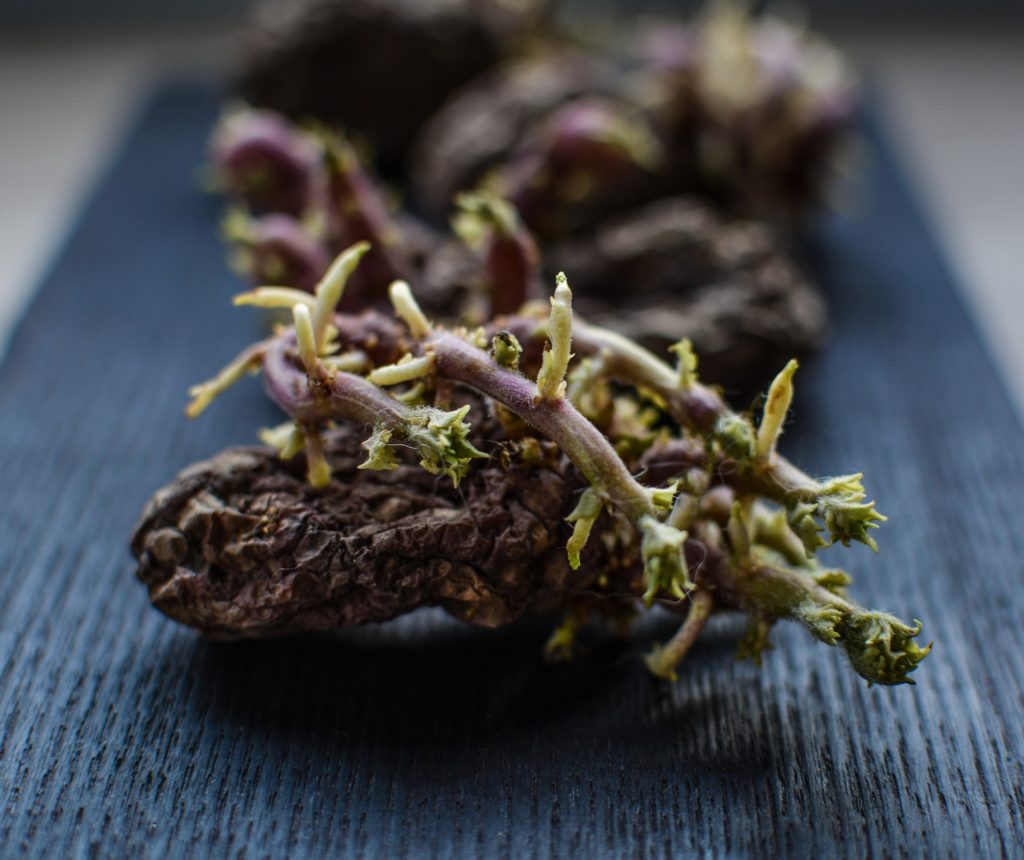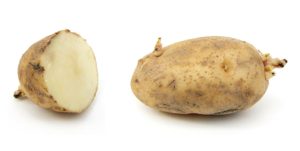No matter what, your potatoes just refuse to chit and send up sprouts. You have waited for weeks, but your potatoes seem like they or dead, or as if the tubers aren’t “fertile.” However, tubers are not seeds; therefore, they cannot simply be infertile. Here are some reasons (and solutions!) for stubborn tubers that simply won’t sprout!

My Harvested Organic Potatoes Won’t Chit or Resprout for the Next Generation!
 If you are dealing with your own home grown potatoes that are 100% herbicide, fungicide, and insecticide free, it may seem rather frustrating when the tubers simply won’t sprout. The biggest issue here is likely dormancy. Did your seed potatoes have to “overwinter”, or were they in a warm location throughout the winter? If not, the potatoes are likely still dormant and awaiting winter’s arrival. Try sticking your potatoes in a dark container, and leave them in the fridge for 2 to 4 weeks. This will simulate the cold, dark soil of winter, and they should begin to sprout once you place them in a sunny warm location afterwards. I tend to have this issue with my homegrown spuds!
If you are dealing with your own home grown potatoes that are 100% herbicide, fungicide, and insecticide free, it may seem rather frustrating when the tubers simply won’t sprout. The biggest issue here is likely dormancy. Did your seed potatoes have to “overwinter”, or were they in a warm location throughout the winter? If not, the potatoes are likely still dormant and awaiting winter’s arrival. Try sticking your potatoes in a dark container, and leave them in the fridge for 2 to 4 weeks. This will simulate the cold, dark soil of winter, and they should begin to sprout once you place them in a sunny warm location afterwards. I tend to have this issue with my homegrown spuds!
My Shriveled Certified Seed Potatoes Won’t Grow, Even Though They Have Sprouts!
 Unfortunately, sometimes our seed potatoes have gone too long before making it to our gardens. Some begin sprouting before they even leave packing facilities, making it that much worse by the time they arrive on store shelves. The longer the sprouts grow through these mesh bags in the bright fluorescent lights, the longer they deplete the energy stores within the tubers they are growing from. Avoid purchasing severely shriveled seed tubers, as it may not end well for your harvest. The sprouts may have already died, or they could be unable to continue growing due to lack of food reserves within the tuber.
Unfortunately, sometimes our seed potatoes have gone too long before making it to our gardens. Some begin sprouting before they even leave packing facilities, making it that much worse by the time they arrive on store shelves. The longer the sprouts grow through these mesh bags in the bright fluorescent lights, the longer they deplete the energy stores within the tubers they are growing from. Avoid purchasing severely shriveled seed tubers, as it may not end well for your harvest. The sprouts may have already died, or they could be unable to continue growing due to lack of food reserves within the tuber.
I Bought and Planted Grocery Store Potatoes; the Sprouts Are Growing Slowly or Not At All!
Grocery store potatoes are an incredibly big gamble, but they are one of the cheapest ways to grow potatoes. Since potatoes can be as cheap as $0.20/lb during some sales, it would seem as if it was a no brainer; especially if you love that particular strain of potato. However, these potatoes are NOT certified seed potatoes like the ones you would normally buy.
You run the risk of introducing potentially dangerous potato diseases into your soil; and, those same potatoes may not grow due to those diseases. Some potatoes are also sprayed with growth retardants, in order to keep them from sprouting during storage. Most of the potatoes you buy in stores have been harvested for several weeks if not months. If they sprout before making it to your home, the grocers know that they may not sell at all. There are still lots of grocery store potatoes that will sprout readily, and are free of growth retardants; for the best outcome, opt for organic potatoes. Check over all of the tubers in the bin, and carefully inspect the one you are purchasing. If you see the slightest blemish or imperfection, choose a different potato.
Should I Be Using Sunlight and Water to Chit My Seed Potatoes?
 I always keep my chitting potatoes near a sunny window. This helps to prepare short, stocky, green, healthy potato sprouts. I also mist them with water if it’s particularly dry inside (as is the case when heat is running!) I do not soak them, but you can place the tubers in water for 5 minutes, then set out to dry. I find it gives my sprouts a lovely little boost, and it encourages root development. They really take off when I place them in the ground.
I always keep my chitting potatoes near a sunny window. This helps to prepare short, stocky, green, healthy potato sprouts. I also mist them with water if it’s particularly dry inside (as is the case when heat is running!) I do not soak them, but you can place the tubers in water for 5 minutes, then set out to dry. I find it gives my sprouts a lovely little boost, and it encourages root development. They really take off when I place them in the ground.
Why Are My Potatoes Sprouting Skinny, White Sprouts in the Dark?
Sometimes, our potatoes decide to sprout before we intend for them to. When potatoes are in the dark, they send out skinny, white sprouts in search of light. Once that sprout reaches light, chlorophyll production begins. The sprout will then begin to develop a green stem and leaves in order to utilize the sunlight. These white sprouts may be very weak, and if you want them to go ahead and chit, remove the white sprouts and let the young tubers resprout in a really sunny window. You will see far better quality stems and leaves being produced.

May I know how much water should you water your potato plants, and how often
Joel, I apologize for the incredibly late reply. However, I am including a link to our page on watering the plants with this comment for future reference. I’m sure you’ve already figured out how to keep your potato plants happy, though!
https://howtogrowpotatoes.website/index.php/2018/07/10/how-often-should-you-water-potato-plants/